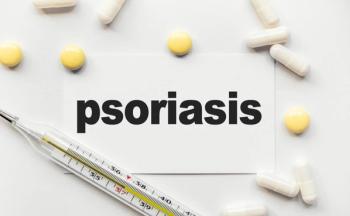
Applying PREVENT Equations May Reduce Statin and Antihypertensive Therapy for 15.8 Million US Adults
Researchers identify potential reductions in statin and antihypertensive therapy eligibility using Predicting Risk of cardiovascular disease EVENTs (PREVENT) equations.
Applying the Predicting Risk of
This population-based cross-sectional study is published in
“Using nationally representative data from the National Health and Nutrition Examination Surveys (NHANES) of 2011 to March 2020, this study sought to estimate the number of US adults who may experience changes in risk categories, treatment eligibility, or clinical outcomes if PREVENT were to be recommended without concomitant changes to treatment criteria,” wrote the researchers of the study.
Atherosclerotic cardiovascular disease (ASCVD) is caused by plaque buildup in arterial walls and refers to conditions that include coronary heart disease (CHD), cerebrovascular disease, peripheral artery disease, and aortic atherosclerotic disease.2
The American College of Cardiology (ACC) and American Heart Association (AHA) have recommended the pooled cohort equations (PCEs) for estimating the 10-year risk of ASCVD since 2013. Recently, an AHA scientific discovery group developed the PREVENT equations, which include kidney measures, removed race as an input, and improved calibration in contemporary populations.
Although the PREVENT equations are known to produce ASCVD risk predictions that are lower than those produced by the PCEs, potential clinical implications have not been explored.
The data included questionnaire responses pertaining to age, gender, race and ethnicity, and medical history; physical examination measurements, including serum cholesterol levels; and prescription medication information. However, NHANES suspended data collection in the 2019 and 2020 survey cycle in March 2020 due to the COVID-19 pandemic, and therefore, combined the incomplete data with survey data from preceding years.
The main outcomes were differences in predicted 10-year ASCVD risk, ACC and AHA risk categorization, eligibility for statin or antihypertensive therapy, and projected incidences of myocardial infarction or stroke.
A total of 45,462 individuals participated in NHANES cycles during the study period, with 20,205 individuals aged 30 to 79 years. Of these individuals, 7765 participants representing 187 million US adults were included in the analyses. Of this sample, 51.3% were female, the median (SD) age was 53 (13) years, 24.7% were Hispanic, 22.9% were Black, and 13.4% were Asian.
The estimated PREVENT equations reclassified just over half (53%; 95% CI, 51.2%-54.8%) of US adults to lower ACC and AHA risk categories and very few (0.41%; 95% CI, 0.25-0.62) US adults to higher-risk categories.
Additionally, the study authors found potential for the PREVENT equations to decrease the number of US adults receiving or recommended for preventative treatments by 14.3 million (95% CI, 12.6-15.9) for satin therapy and 2.62 million (95% CI, 2.02-3.21) for antihypertensive therapy.
Furthermore, it was estimated that over 10 years, these decreases in treatment eligibility could result in 107,000 additional occurrences of myocardial infarction or stroke, affecting twice as many males as females and a greater proportion of Black individuals compared with White individuals.
The researchers acknowledged some limitations to their findings, including that PREVENT is not currently recommended to replace the PCEs, the study did not evaluate the PREVENT equations using addition optional predictors, and ACC/AHA guidelines recommended risk discussion involving shared decision-making with patients, which does not always result in therapy initiation.
Despite these limitations, the researchers believe the study suggests the application of the PREVENT equations to current risk-based treatment threshold could reduce eligibility for stain and antihypertensive therapy.
“Although PREVENT advances the important goal of more accurate and precise cardiovascular risk prediction, the magnitude of these projected changes warrants careful reconsideration of current treatment thresholds using decision-analytic or cost-effectiveness frameworks,” wrote the researchers.
References
1. Diao J, Shi I, Murthy V.L, et al. Projected changes in statin and antihypertensive therapy eligibility with the AHA PREVENT cardiovascular risk equations. JAMA. Published online July 29, 2024. doi:10.1001/jama.2024.12537
2. Atherosclerotic cardiovascular disease (ASCVD). American Heart Association. Accessed July 29, 2024.
Newsletter
Stay ahead of policy, cost, and value—subscribe to AJMC for expert insights at the intersection of clinical care and health economics.







































